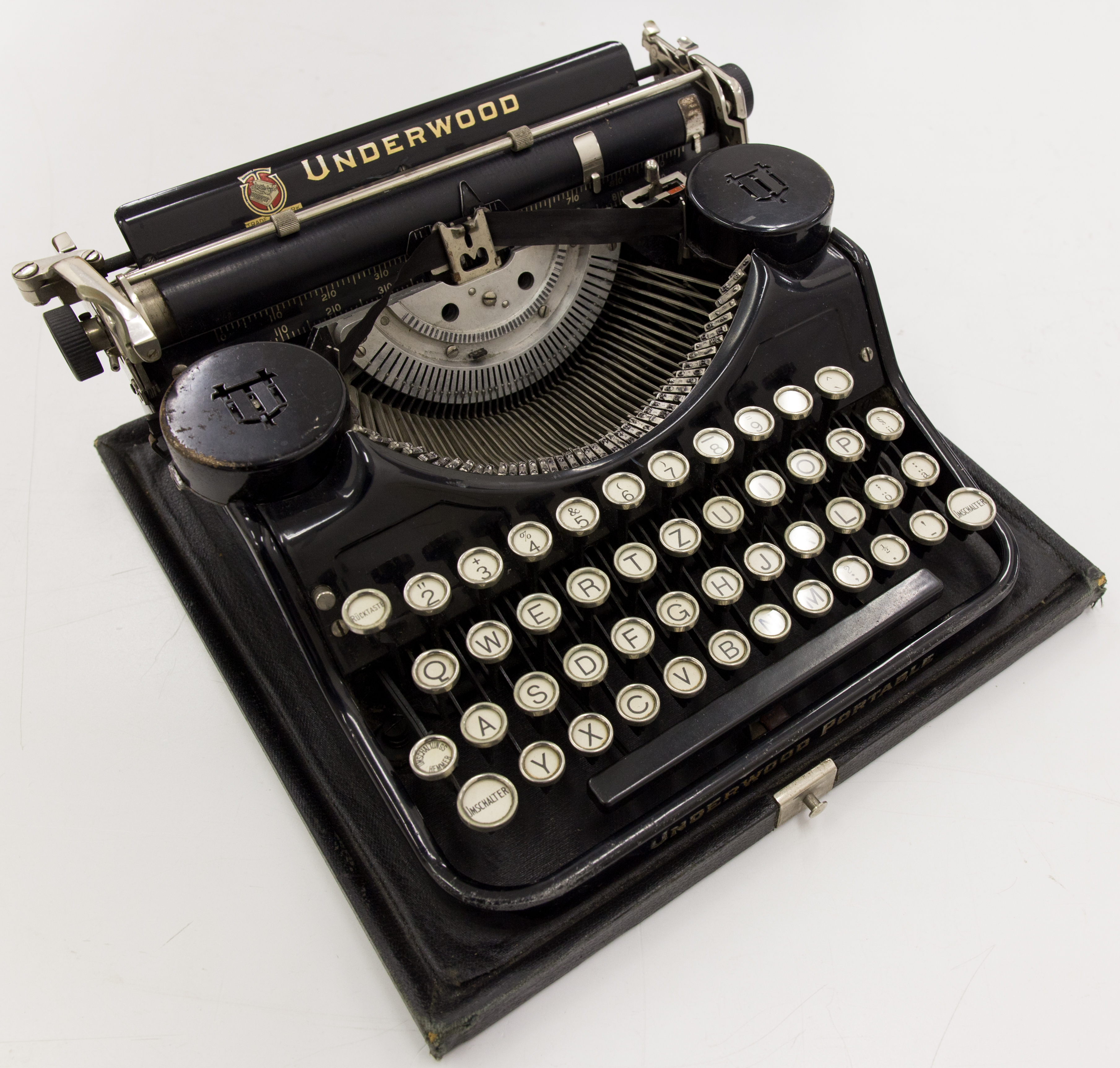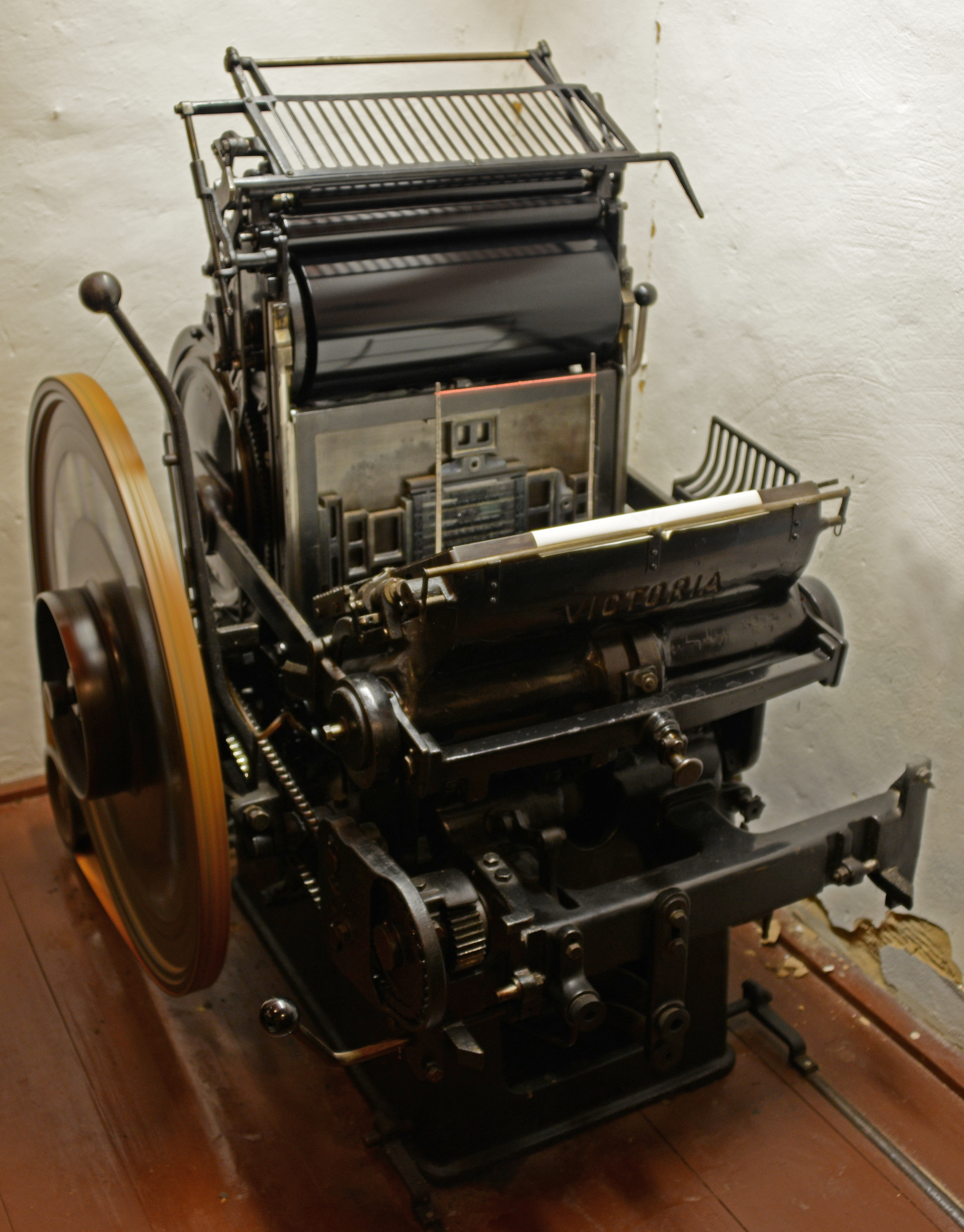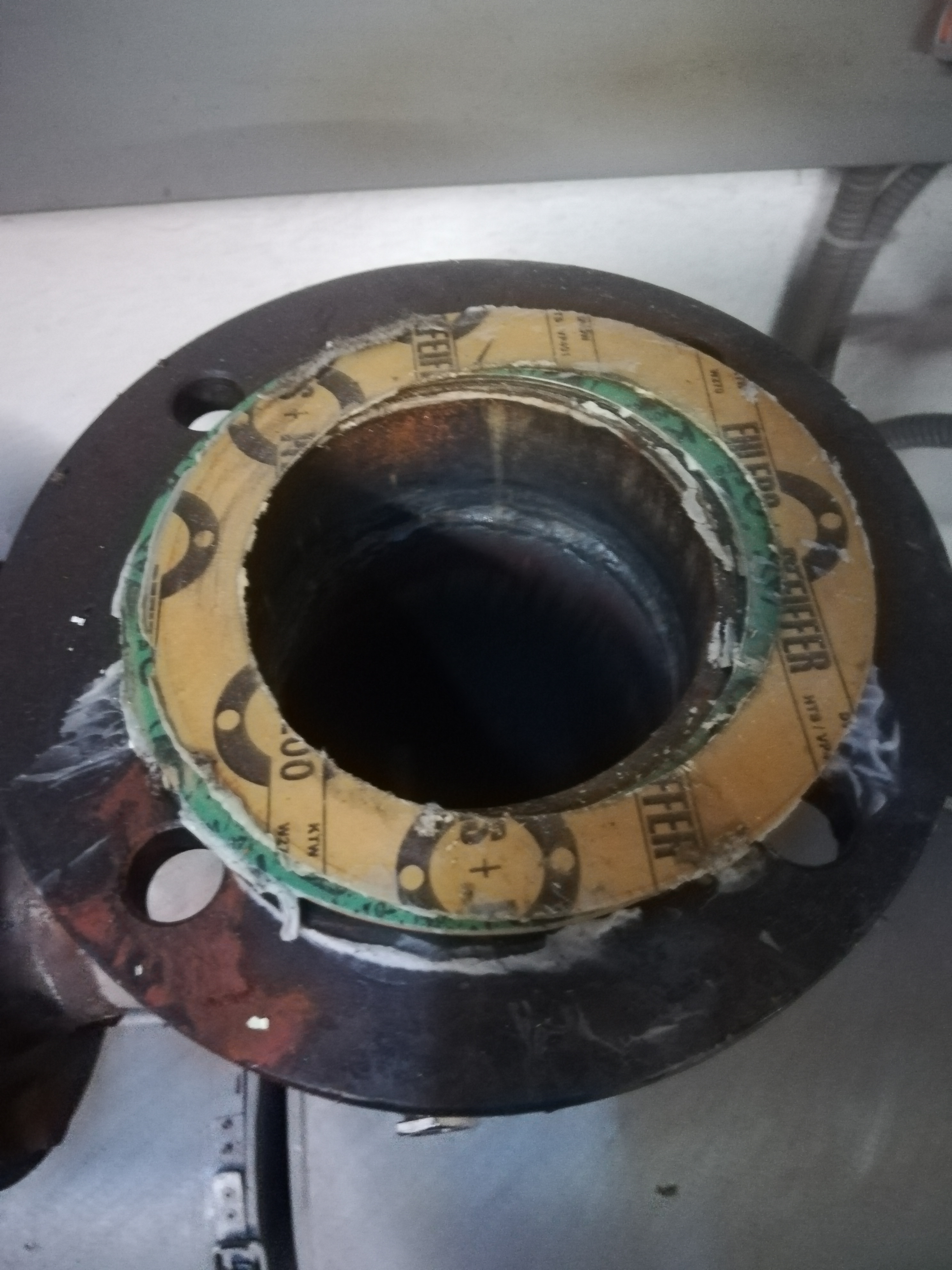|
Platen
A platen (or platten) is a platform with a variety of roles in printing or manufacturing. It can be a flat metal (or earlier, wooden) plate pressed against a medium (such as paper) to cause an impression in letterpress printing. Platen may also refer to a typewriter roller which friction-feeds paper into position below the typebars or print head. It can refer to the glass surface of a copier, and the rotating disk used to polish semiconductor wafers. Applications Office equipment In office copiers and scanners, the platen is a flat glass surface on which operators place papers or books for scanning. The platen is also called the flatbed. Platens are also used in some printers, such as the dot-matrix printer. Manufacturing and processing Semiconductor manufacturing In semiconductor manufacturing, specifically chemical-mechanical planarization, a flat, rotating platen covered with a pad is used to polish semiconductor wafers (see image). Screen printing In textile sc ... [...More Info...] [...Related Items...] OR: [Wikipedia] [Google] [Baidu] |
Typebar
A typewriter is a Machine, mechanical or electromechanical machine for typing characters. Typically, a typewriter has an array of Button (control), keys, and each one causes a different single character to be produced on paper by striking an ink ribbon, inked ribbon selectively against the paper with a Sort (typesetting), type element. Thereby, the machine produces a legible written document composed of ink and paper. By the end of the 19th century, a ''person'' who used such a device was also referred to as a ''typewriter''. The first commercial typewriters were introduced in 1874, but did not become common in offices in the United States until after the mid-1880s. The typewriter quickly became an indispensable tool for practically all writing other than personal handwritten correspondence. It was widely used by professional writers, in offices, in business correspondence in private homes, and by students preparing written assignments. Typewriters were a standard fixture in m ... [...More Info...] [...Related Items...] OR: [Wikipedia] [Google] [Baidu] |
Jobbing Press
A jobbing press, job press, or jobber is a variety of printing press used in letterpress printing. The press is meant to be operated by a pressman working on Job production, small jobs, as opposed to long print runs or newspaper work, or jobs that require less than a full-sized sheet of paper, though the definition of "small jobs" may vary widely depending on the printing shop. Such work might include printing personal stationery, handbills, or other small printing jobs, or may include even a small book. Such presses were common in the later 19th and 20th centuries, have yet been largely replaced by the photocopier for small and medium runs, and by the desktop computer for personal stationery. Today, the jobber is the preferred press for letterpress printers who now produce high-end prints (often wedding invitations) for customers who want an antique effect. Though the term can refer to any small printing press or machine intended for such work, it most commonly refers to a class ... [...More Info...] [...Related Items...] OR: [Wikipedia] [Google] [Baidu] |
Letterpress Printing
Letterpress printing is a technique of relief printing for producing many copies by repeated direct impression of an inked, raised surface against individual sheets of paper or a continuous roll of paper. A worker composes and locks movable type into the "bed" or "chase" of a press, inks it, and presses paper against it to transfer the ink from the type, which creates an impression on the paper. In practice, letterpress also includes wood engravings; photo-etched zinc plates ("cuts"); linoleum blocks, which can be used alongside metal type; wood type in a single operation; stereotype (printing), stereotypes; and electrotypes of type and blocks. With certain letterpress units, it is also possible to join movable type with slug (typesetting), slugs cast using hot metal typesetting. In theory, anything that is "type high" (i.e. it forms a layer exactly 0.918 inches thick between the bed and the paper) can be printed using letterpress. Letterpress printing was the normal form of ... [...More Info...] [...Related Items...] OR: [Wikipedia] [Google] [Baidu] |
Gutenberg Press
A printing press is a mechanical device for applying pressure to an inked surface resting upon a print medium (such as paper or cloth), thereby transferring the ink. It marked a dramatic improvement on earlier printing methods in which the cloth, paper, or other medium was brushed or rubbed repeatedly to achieve the transfer of ink and accelerated the process. Typically used for texts, the invention and global spread of the printing press was one of the most influential events in the second millennium. In Germany, around 1440, the goldsmith Johannes Gutenberg invented the movable-type printing press, which started the Printing Revolution. Modelled on the design of existing screw presses, a single Renaissance movable-type printing press could produce up to 3,600 pages per workday, compared to forty by hand-printing and a few by hand-copying. Gutenberg's newly devised hand mould made possible the precise and rapid creation of metal movable type in large quantities. His t ... [...More Info...] [...Related Items...] OR: [Wikipedia] [Google] [Baidu] |
Image Scanner
An image scanner (often abbreviated to just scanner) is a device that optically scans images, printed text, handwriting, or an object and converts it to a digital image. The most common type of scanner used in the home and the office is the flatbed scanner, where the document is placed on a glass bed. A sheetfed scanner, which moves the page across an image sensor using a series of rollers, may be used to scan one page of a document at a time or multiple pages, as in an automatic document feeder. A handheld scanner is a portable version of an image scanner that can be used on any flat surface. Scans are typically downloaded to the computer that the scanner is connected to, although some scanners are able to store scans on standalone Flash memory, flash media (e.g., memory cards and USB flash drive, USB drives). Modern scanners typically use a charge-coupled device (CCD) or a contact image sensor (CIS) as the image sensor, whereas drum scanners, developed earlier and still used for ... [...More Info...] [...Related Items...] OR: [Wikipedia] [Google] [Baidu] |
Belt Sander
A belt sander or strip sander is a sander used in shaping and finishing wood and other materials. It consists of an electric motor that turns a pair of drums on which a continuous loop of sandpaper is mounted. Belt sanders may be handheld and moved over the material, or stationary (fixed), where the material is moved to the sanding belt. Stationary belt sanders are sometimes mounted on a work bench, in which case they are called bench sanders. Stationary belt sanders are often combined with a disc sander. Belt sanders can have a very aggressive action on wood and are normally used only for the beginning stages of the sanding process, or used to rapidly remove material. Sometimes they are also used for removing paints or finishes from wood. Fitted with fine grit sand paper, a belt sander can be used to achieve a completely smooth surface. Stationary belt sanders are used for removing non-ferrous metals, such as aluminum. Non-ferrous metals tend to clog grinding wheels, quic ... [...More Info...] [...Related Items...] OR: [Wikipedia] [Google] [Baidu] |
Specimen
Specimen may refer to: Science and technology * Sample (material), a limited quantity of something which is intended to be similar to and represent a larger amount * Biological specimen or biospecimen, an organic specimen held by a biorepository for research * Laboratory specimen, a biological specimen taken by sampling * Zoological specimen, an animal or part of an animal preserved for scientific use * Botanical specimen, a plant or part of a plant used for scientific purposes * Herbarium, a collection of preserved plant specimens for scientific study * Type specimen (mineralogy), a reference sample by which a mineral is defined Printing * Specimen banknote, to aid in the recognition of banknotes * Specimen stamp, used to identify valid stamps Other uses * Specimen (band), a British band * ''Specimen'' (film), a 1996 Canadian film * Specimen Products, an American audio equipment and musical instrument manufacturer * Specimen Ridge, a ridge in Yellowstone National Park, ... [...More Info...] [...Related Items...] OR: [Wikipedia] [Google] [Baidu] |
Welding
Welding is a fabrication (metal), fabrication process that joins materials, usually metals or thermoplastics, primarily by using high temperature to melting, melt the parts together and allow them to cool, causing Fusion welding, fusion. Common alternative methods include solvent welding (of thermoplastics) using chemicals to melt materials being bonded without heat, and #Solid-state welding, solid-state welding processes which bond without melting, such as pressure, cold welding, and diffusion bonding. Metal welding is distinct from lower temperature bonding techniques such as brazing and soldering, which do not melt the base metal (parent metal) and instead require flowing a filler metal to solidify their bonds. In addition to melting the base metal in welding, a filler material is typically added to the joint to form a pool of molten material (the weld pool) that cools to form a joint that can be stronger than the base material. Welding also requires a form of shield to ... [...More Info...] [...Related Items...] OR: [Wikipedia] [Google] [Baidu] |
Plywood
Plywood is a composite material manufactured from thin layers, or "plies", of wood veneer that have been stacked and glued together. It is an engineered wood from the family of manufactured boards, which include plywood, medium-density fibreboard (MDF), oriented strand board (OSB), and particle board (or chipboard). All plywoods bind resin and wood fibre sheets (cellulose cells are long, strong and thin) to form a composite material. The sheets of wood are stacked such that each layer has its grain set typically (see below) perpendicular to its adjacent layers. This alternation of the grain is called ''cross-graining'' and has several important benefits: it reduces the tendency of wood to split when nailed at the edges; it reduces thickness swelling and shrinkage, providing improved dimensional stability; and it makes the strength of the panel consistent across all directions. There is usually an odd number of plies, so that the sheet is balanced, that is, the surface layers ha ... [...More Info...] [...Related Items...] OR: [Wikipedia] [Google] [Baidu] |
Gasket
Some seals and gaskets A gasket is a mechanical seal which fills the space between two or more mating surfaces, generally to prevent leakage from or into the joined objects while under compression. It is a deformable material that is used to create a static seal and maintain that seal under various operating conditions in a mechanical assembly. Gaskets allow for "less-than-perfect" mating surfaces on machine parts where they can fill irregularities. Gaskets are commonly produced by cutting from sheet materials. Given the potential cost and safety implications of faulty or leaking gaskets, it is critical that the correct gasket material is selected to fit the needs of the application. Gaskets for specific applications, such as high pressure steam systems, may contain asbestos. However, due to health hazards associated with asbestos exposure, non-asbestos gasket materials are used when practical. It is usually desirable that the gasket be made from a material that is to some de ... [...More Info...] [...Related Items...] OR: [Wikipedia] [Google] [Baidu] |
Plastic
Plastics are a wide range of synthetic polymers, synthetic or Semisynthesis, semisynthetic materials composed primarily of Polymer, polymers. Their defining characteristic, Plasticity (physics), plasticity, allows them to be Injection moulding, molded, Extrusion, extruded, or Compression molding, pressed into a diverse range of solid forms. This adaptability, combined with a wide range of other properties such as low weight, durability, flexibility, chemical resistance, low toxicity, and low-cost production, has led to their widespread use around the world. While most plastics are produced from natural gas and petroleum, a growing minority are produced from renewable resources like polylactic acid. Between 1950 and 2017, 9.2 billion metric tons of plastic are estimated to have been made, with more than half of this amount being produced since 2004. In 2023 alone, preliminary figures indicate that over 400 million metric tons of plastic were produced worldwide. If global trends ... [...More Info...] [...Related Items...] OR: [Wikipedia] [Google] [Baidu] |







